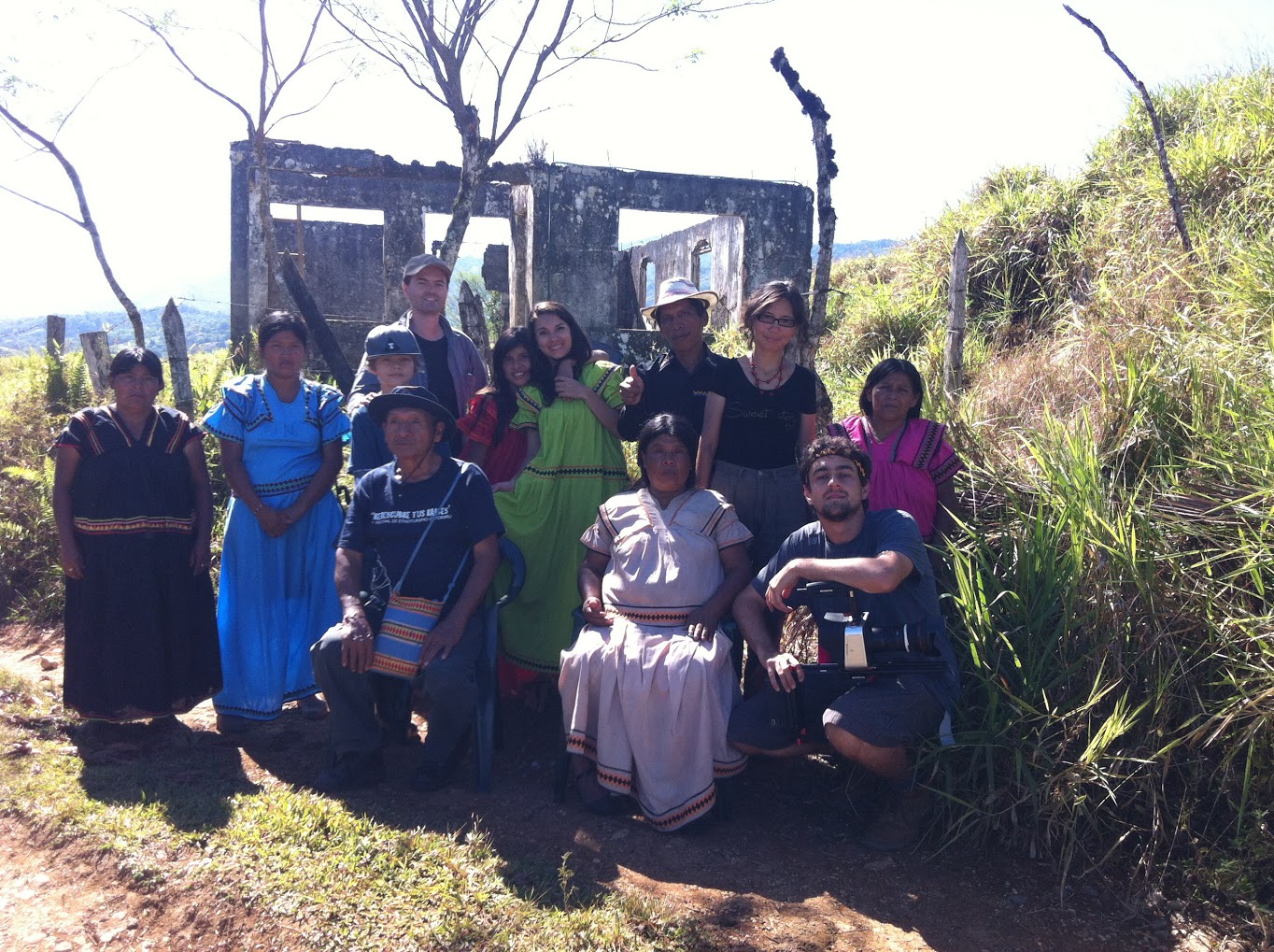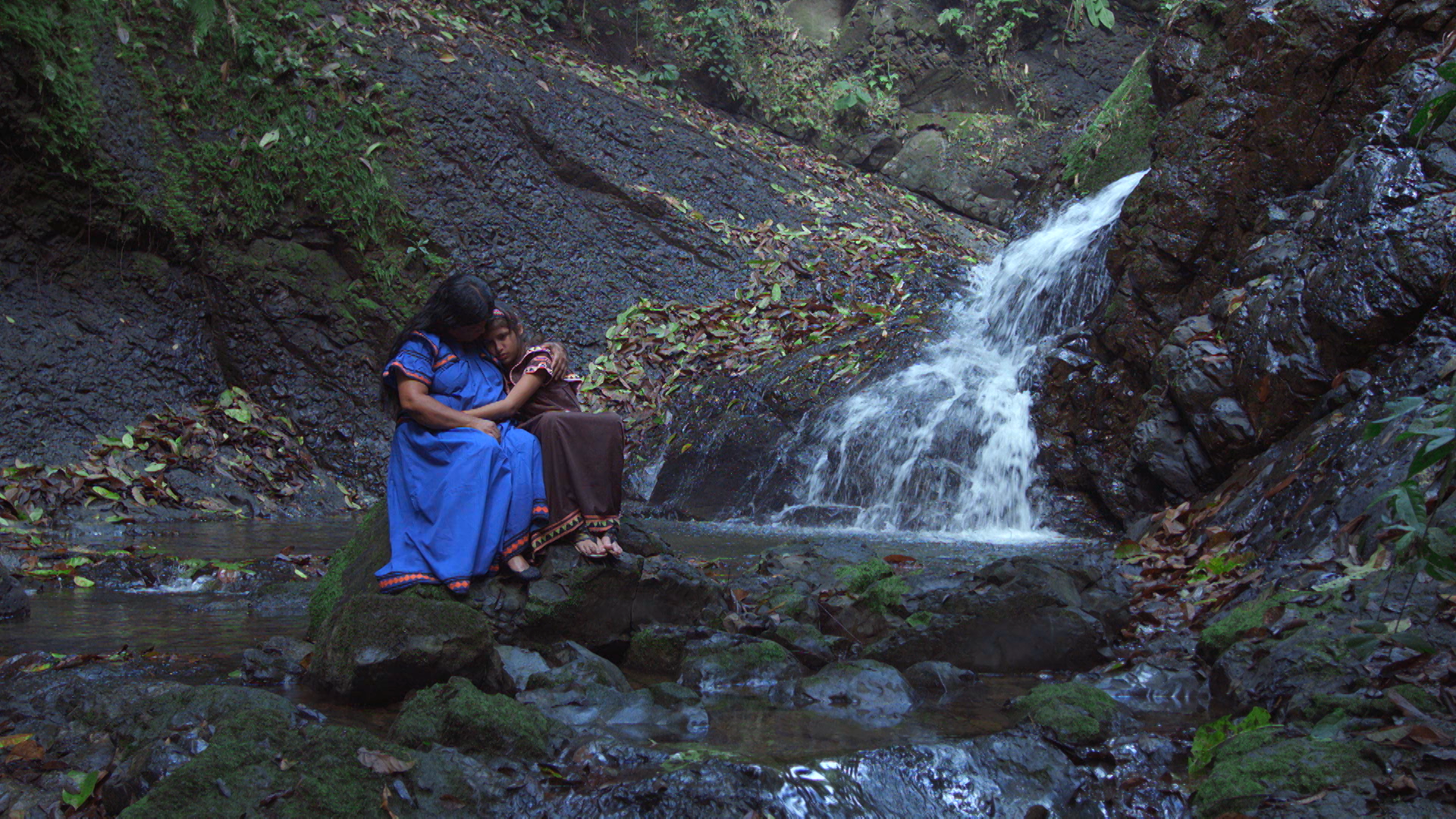I had the pleasure of interviewing Dana Ziyasheva (who is now a part of our Incluvie team!), who wrote and directed her featured film, Defenders of Life (2015). Ziyasheva was born in Kazakhstan, and went on to become a journalist and a UNESCO diplomat, where she spent 20 years working for the United Nations. As a UNESCO diplomat, she worked with indigenous tribes in Costa Rica, Panama, Nicaragua, Honduras, and Mexico. This was when she decided to make a career in filmmaking after she encountered the Ngäbe community in Costa Rica, and that’s how Defenders of Life was born. Interesting fact: FNX (First Nations Experience TV), the first and only national broadcast television network in the United States exclusively devoted to Native American and World Indigenous content, purchased the rights to broadcast Defenders of Life and was the first U.S. network to premiere the film in North America. Defenders of Life is about the Ngäbe community leader Doña Carmen, conflicted by her tribe’s traditional ways after her 12-year-old granddaughter is impregnated by their 70-year neighbor, who plans to marry her. While the film is based on the Ngäbe people in Costa Rica, the film can relate to the obstacles Native Americans face in present-day America. It is a perfect film for Native American Heritage Month. In this interview, Dana Ziyasheva gives us insights into the making of Defenders of Life, and the hardships Ngäbe girls endured in Costa Rica.
Editor’s Note: This article might be triggering, for it contains topics of child rape and child brides.

What inspired you to make Defenders of Life?
I was inspired by the rich and ancient Ngäbe culture and women of the tribe. The Ngäbe people live in Costa Rica and Panama, often side by side with another indigenous group called Bugle. It is normal that the young generation of Ngäbe wants to enjoy what the modern world has to offer. But it often means abandoning their old customs and traditional way of living, moving to cities, speaking Spanish, and not Ngäbere. I felt this wind of change when I was working with women in La Casona, a big Ngäbe stretch of land in the northeastern part of Costa Rica. In fact, I was an actor of change, bringing in computers, TV crews, training, and radio equipment that would allow indigenous women to express their identity and have their voices heard. Whenever I was coming to La Casona, I stayed in the house of Ngäbe matriarch Doña Carmen Romero Palacios. We became friends. She shared with me stories of her childhood. Her daughters also confided in me, and from there, a picture of a complex web of destinies of men and women of the tribe started forming in front of my eyes. Doña Carmen told me that once her generation is gone, Ngäbe traditions might be lost forever. I suggested her to make a movie together, and she jumped at the opportunity of doing an artistic endeavor with me.
How has the release of Defenders of Life impacted the Ngäbe Community?
Making this film wouldn’t be possible without the full involvement of the Ngäbe community. The Ngäbe of La Casona are very creative, self-sufficient, and charismatic people. Like everywhere else in the world, there were people who didn’t care about the movie being made, while other members of the community, put their heart and soul into this project. They improvised most of the scenes, donated costumes, and opened their houses to our film crew. When we premiered the film in the La Casona communal house, the response was overwhelmingly positive. I think the movie helped people realize that some traditions such as early marriages, can be harmful. Overall, however, the Ngäbe were proud of the film.
The cast then went to San Jose, the capital of Costa Rica, for the national premiere, in front of the press, students, and representatives of the diplomatic corps and government. Doña Carmen, cast, and community leaders were invited to the President’s administration of Costa Rica, for discussions, following a screening of the film. They expressed their concerns at the round table, and given that relations between the government and indigenous groups were somewhat tense at that moment, it helped alleviate tension to a certain degree. We partnered with the national NGO Paniamor, who were working to outlaw early marriage and forced unions with minors. Since this is where the main conflict of Defenders of Life lies, seeing the heartbreaking story of Esmeralda, did help to realize the depth of this problem. After that, the government of Costa Rica adopted a law that banned early marriages.

What scene of the film did you enjoy shooting?
I liked shooting scenes with Carmen the most. She is such a great actress, very intuitive. When I was editing the film, I couldn’t stop marveling at some takes, and wondering how is it possible, for a woman who doesn’t know how to read and has never had experience in front of the camera, to produce such an authentic and captivating performance! She is a natural. And so is Eylin Esther Jimenez Gonzales, who played Esmeralda. I was afraid we won’t be able to find a 12-year-old indigenous girl to play such a difficult role. I know from experience, that filming children can be very challenging. We did auditions with several girls, and I saw that they wouldn’t be able to sustain the rhythm of shooting or taking directions. Eylin was relaxed. She would shoot a scene, and then go and have lunch, or swing in a hammock. I think, she and Arman Darbo, who played her friend Feb, were competing against who is a better actor, and trying to out-cool each other. Eylin is Carmen’s granddaughter in real life, and inherited Carmen’s resilience, talent, and swagger.
How does nature play a role in the Ngäbe culture?
Ngäbe were on this land first, long before the Spanish people. Their connection with Mother Nature is profound and very personal. Carmen can live off the forest. Go in and come back with a painting – paper made with tree bark and colored with plant dyes. In Defenders of Life, in moments of crisis, women seek refuge in the forest where they communicate with the spirits of animals and the deceased. They each have a totem snake who helps them in life. Indigenous women know how to induce a miscarriage: there is a fruit for it. When Pamela offers Carmen help, she thinks that Carmen has nowhere to turn herself, and that’s a misconception because if everything fails, indigenous knowledge can always offer a solution in nature.
How has the issue of child rape been dealt with in this film?
We are being honest about it. We don’t sweeten the pill because it would mean doing a disservice to such a painful, real-life issue. We don’t show the rape, but it is pretty clear what is going to happen and why it is going to happen. It was important to me, to dissect the chain of events that lead to it. I also chose to start this scene with a close-up of the machete on Don Claudio’s belt, and Esmeralda looking at it. She has an even bigger fear of that than being raped: She might be killed, like her mother. And the fact that the scene is so mundane, with no dramatic music, and no knight in shining armor to the rescue, makes it even more horrifying.
What message do you want viewers to leave with?
In Defenders of Life, I wanted to show the complex interrelation between tradition, development, and abuse of power. The film is about differences in cultural perceptions and the universality of emotions. When coming into someone else’s world, we should avoid a rush to judgments. It’s always wise to put ourselves in their shoes, first, and treat others the way we want to be treated.
Defenders of Life is streaming for free on Plex and is available to rent on Amazon Video.

Comments